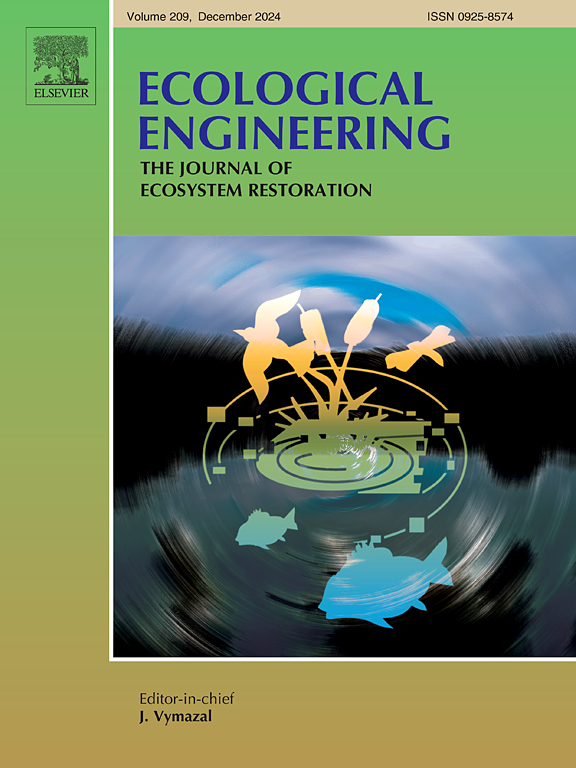Basil and Swiss chard: Edible crops for use in floating treatment wetlands improving agricultural runoff
IF 3.9
2区 环境科学与生态学
Q1 ECOLOGY
引用次数: 0
Abstract
The plant species established within floating treatment wetlands (FTWs) influence nutrient removal efficiency. To enhance adoption of FTWs by agricultural producers, both economic and ecological benefits from FTWs are needed to increase their use within irrigation retention reservoirs. Thus, we ascertained the feasibility of growing food crops in FTWs by evaluating two edible plant species to determine survivability and nutrient accumulation when grown in FTWs. We quantified plant growth (at saleable/harvestable size), nutrient uptake in root and shoot tissues, and overall nutrient removal efficiency of sweet basil (Ocimum basilicum) and Swiss chard (Beta vulgaris) over a six- or eight-week period, respectively, with exposures to simulated irrigation return flow with moderate or high concentrations of nutrients present. Two cultivars of basil were mixed within each mesocosm to create a mixed planting design across the two fertilizer treatments and two types of Swiss chard (species and ‘Bright Lights’) were evaluated separately. Nitrogen (N) and phosphorus (P) removal efficiencies were calculated for a 7-day hydraulic retention time. Growth and nutrient removal efficiency were similar within each species. The average N removal rate was 0.077 and 0.19 g·m−2 day−1 for basil and 0.16 and 0.30 g·m−2 day−1 for the Swiss chard for moderate and high nutrient treatments, respectively. The average P removal rate was 0.015 and 0.036 g·m−2 day−1 for basil and 0.019 and 0.043 g·m−2 day−1 for Swiss chard for moderate and high nutrient treatments, respectively. Most nutrients were fixed within plant shoots. Multiple harvests throughout the growing season could potentially lead to increased profits and nutrient uptake. Additional research is needed to determine if higher nutrient reductions can be achieved through additional harvests, greater planting densities, or increased percent cover. Both basil and Swiss chard are promising plant selections for FTWs, pairing nutrient removal with marketable crop production.

求助全文
约1分钟内获得全文
求助全文
来源期刊

Ecological Engineering
环境科学-工程:环境
CiteScore
8.00
自引率
5.30%
发文量
293
审稿时长
57 days
期刊介绍:
Ecological engineering has been defined as the design of ecosystems for the mutual benefit of humans and nature. The journal is meant for ecologists who, because of their research interests or occupation, are involved in designing, monitoring, or restoring ecosystems, and can serve as a bridge between ecologists and engineers.
Specific topics covered in the journal include: habitat reconstruction; ecotechnology; synthetic ecology; bioengineering; restoration ecology; ecology conservation; ecosystem rehabilitation; stream and river restoration; reclamation ecology; non-renewable resource conservation. Descriptions of specific applications of ecological engineering are acceptable only when situated within context of adding novelty to current research and emphasizing ecosystem restoration. We do not accept purely descriptive reports on ecosystem structures (such as vegetation surveys), purely physical assessment of materials that can be used for ecological restoration, small-model studies carried out in the laboratory or greenhouse with artificial (waste)water or crop studies, or case studies on conventional wastewater treatment and eutrophication that do not offer an ecosystem restoration approach within the paper.
 求助内容:
求助内容: 应助结果提醒方式:
应助结果提醒方式:


